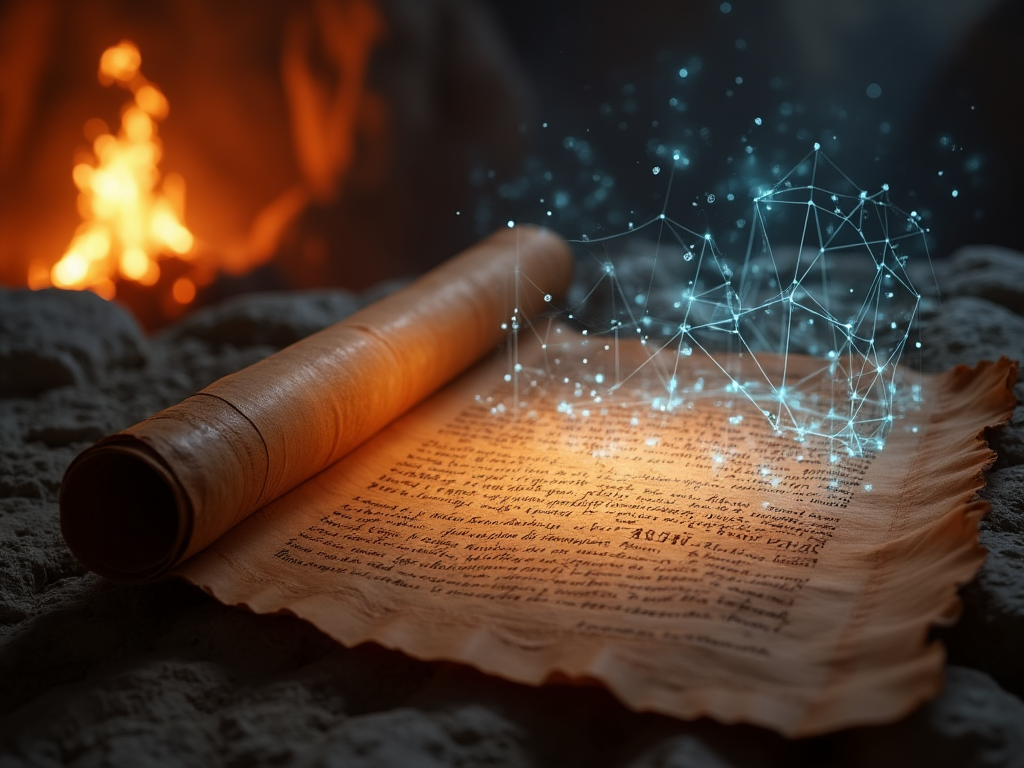
A Time Capsule From the Ashes
Just think of a library in perdition frozen in disaster! hundreds of scrolls, immemorial secrets buried in the dust by the fury of volcanic winds. This is precisely what occurred in the Roman city of Herculaneum which was destroyed together with Pompeii in 79 AD. The carbonized papyri were so difficult to read that over centuries even scholars did not manage to unroll them. Not anymore, with artificial intelligence, we are opening them virtually word by word.
And this is not strictly archaeology, it is a computer restoration of information lost to history. Do these scrolls hold long forgotten philosophies? Lost poems? Preliminary scientific theories? Implications are overwhelming. And what is the best of it? Code was cracked by a 21-year-old intern.
The Herculaneum Scrolls: Why They Defied Decoding
The scrolls, which were discovered in the 1750s, were too fragile and initial efforts to unroll them reduced them to dust. Modern X-rays could not make it out–ink, cobble-based, almost invisible on the charred papyrus. They had been gathering in museums over the past decades, inadmissibly legible, until they were virtually impossible to read.
Then there was Dr. Brent Seales who is a computer scientist at the University of Kentucky. His group created a method of 3D scanning in order to outline the inner structure of the scrolls. Still there was a difficulty,–how to tell the difference between ink and ash? That is where AI came in.
Key Challenges:
- The ink did not take up metals and CT scans were of no use.
- Initial efforts were based on multi-spectral imagery, however they were patchy.
- In the course of the 19th century, physical unrolling killed appr. 5 percent of the scrolls.
The AI Revolution: How a $1 Million Contest Changed Everything
In 2023 tech entrepreneur Nat Friedman created the Vesuvius Challenge, in which he would provide one million dollars to anyone able to recover text data in the scans. The solution was found by a man very unlikely to find it: Luke Farritor, a college student and intern of the SpaceX. He deciphered the first readable words, a word 300 years later using a neural network projected the word was 3000 years old, read (at that moment) as Parts of the word: 1. πο and 2. Rho (porphyras, meaning purple).
The Way the AI Works:
- The algorithm detects minor textural differences in areas of ink application by being trained on micro-CT scans.
- As compared to earlier procedures, it is not based on chemical contrast, only patterns in the papyrus fibers are utilized.
- Since then the system has revealed hundreds of words, such as an allusion to pleasure, music and Epicurean philosophy.
Real-World Comparison:
Imagine it is like a burned painting restoration. Older techniques threatened to burn the canvas. AI does not allow one to touch the brush, though.
What Have We Learn? Early finds & secret treasures
Thus, Decoded fragments indicate so far that these scrolls were part of the personal collection of a philosopher. One section talks of pleasures of life, which resembles Epicurus teachings. The other refers to the sound of the lyre suggest a lost musical theory.
Potential Game-Changers:
- Lost Aristotle works? Some researchers are sure that his lost conversations may appear here.
- Christian Texts Early? Herculaneum was an educated and well-off center–was that before Biblical texts?
- Roman Science? Pliny the Elder himself perished in the eruption- did his contemporaries have unpublished work?
Expert Insight:
“It is a new Dead Sea scroll, so to speak, but the digging is done with AI.” Dr. Federica Nicolardi, Papyrologist, University of Naples
The Ethics of Digital Archaeology: Who Controls the Past?
Not all are champagne. Other historians are concerned that AI may start to produce hallucinated versions of text to make false readings. Some suggest they should release the scrolls as open source and not scholarly lock boxes.
Case Study: The Dead Sea Scrolls Controversy
Access to the Dead Sea Scrolls was limited to a handful of scholars when they were first discovered and during the next few decades. The critics termed it as academic hoarding. And here will be the similar thing?
Possible Solutions:
- Translations done by crowdsourcing (such as the Vesuvius Challenge).
- Verification of block chain to understand changes in interpretations.
- A universal digital library against all the recovered writings.
Conclusion: The Future of Lost History
We stand at a centre. AI is doing more than enabling us to read these scrolls–it is rewriting our way of exploring the past. However, as we all know, there is great responsibility with great power. Is all recuperated text to be published? Or do we want to be misunderstood in headline chasing?
Final Thought:
“The Herculaneum scrolls tell us that history cannot be hard and fast, but burns in ashes of history, and waits to be broken open with the right kind of tools in order to be historical. What more has there to be, that we are just about to grasp?“
What’s Next?
- Real time updates using the #VesuviusChallenge.
- Vote: shall the transmission of the written texts when deciphered by AI be published at once? Idea of poll to engage.
